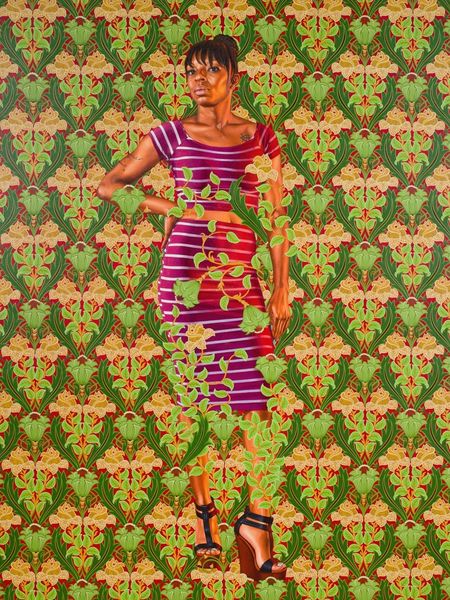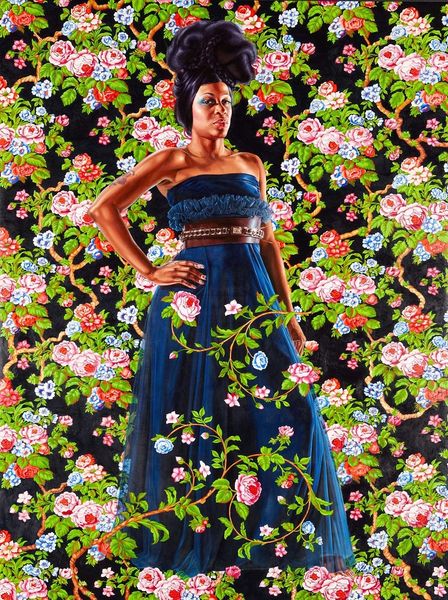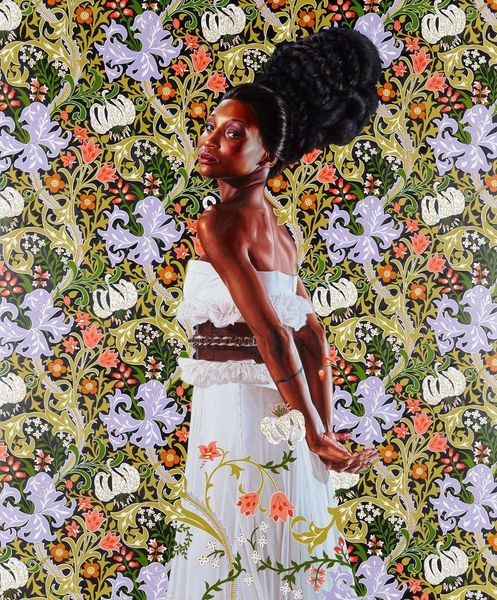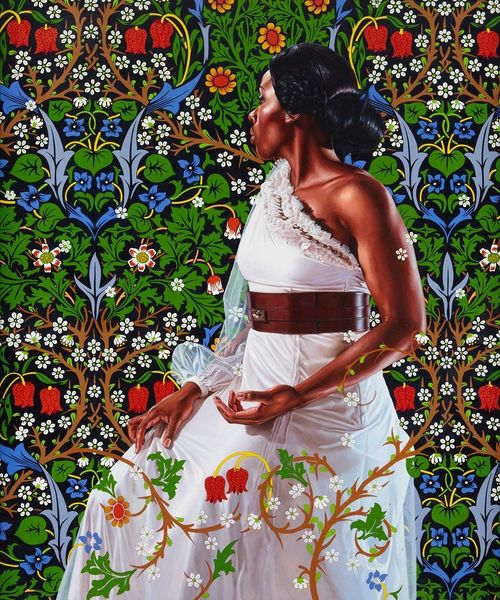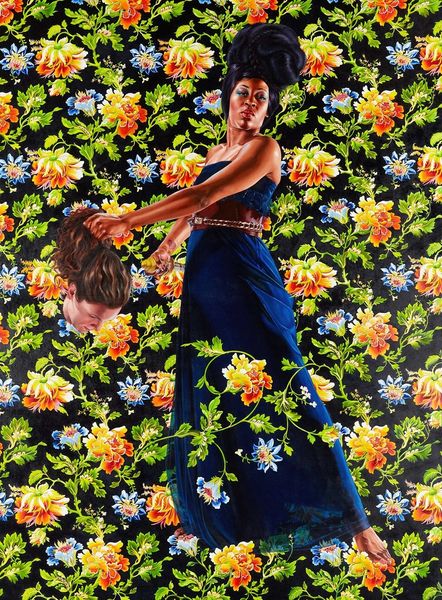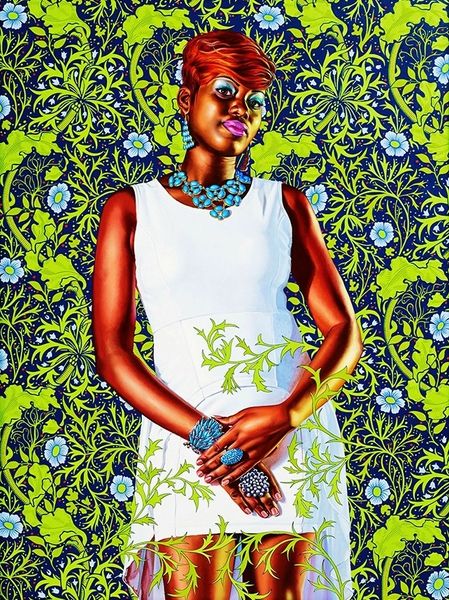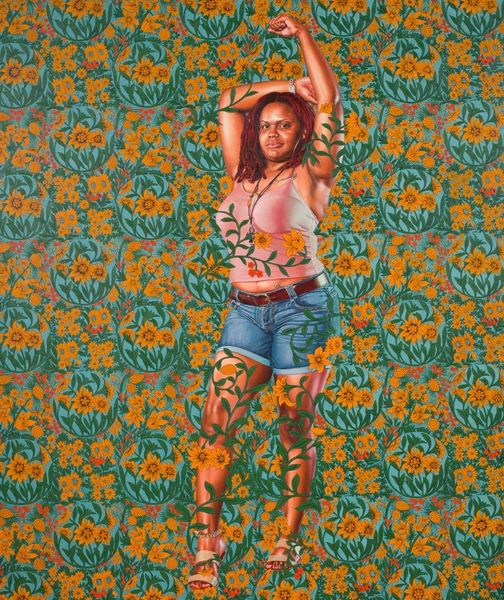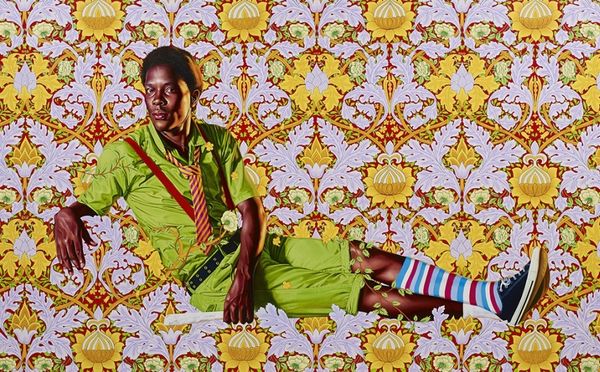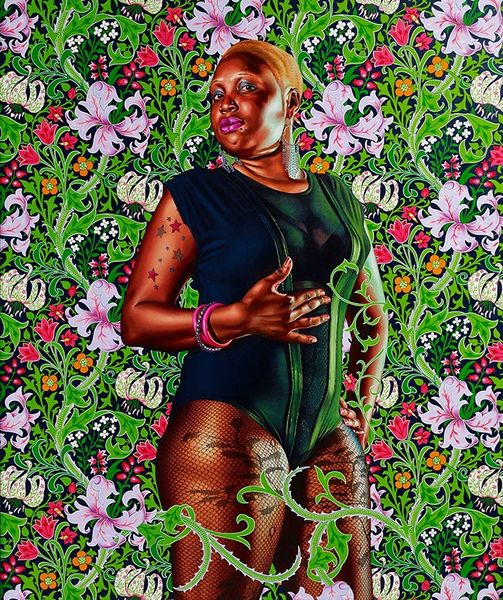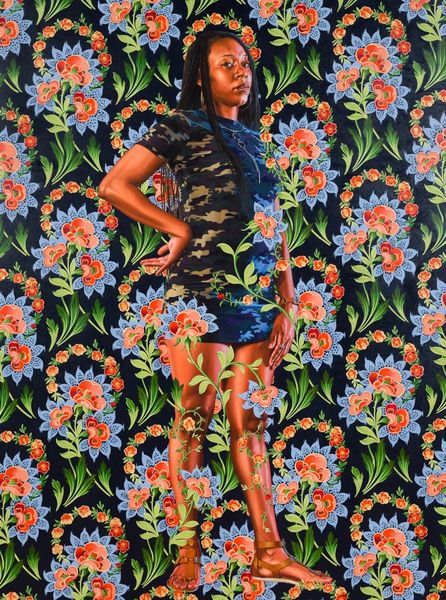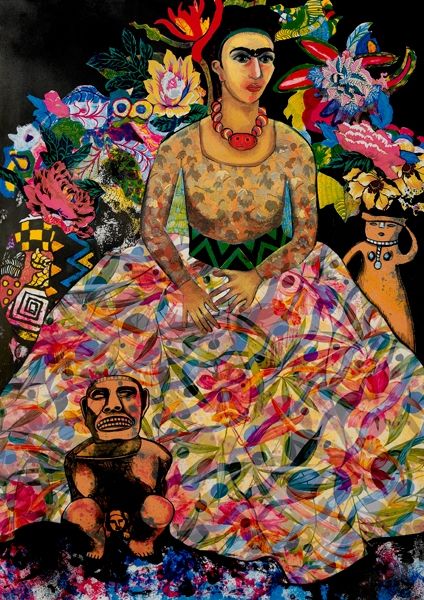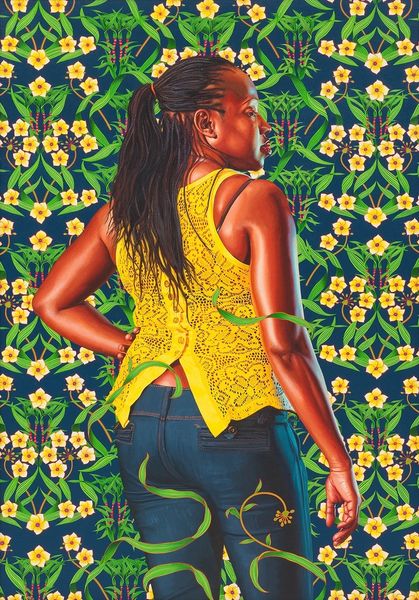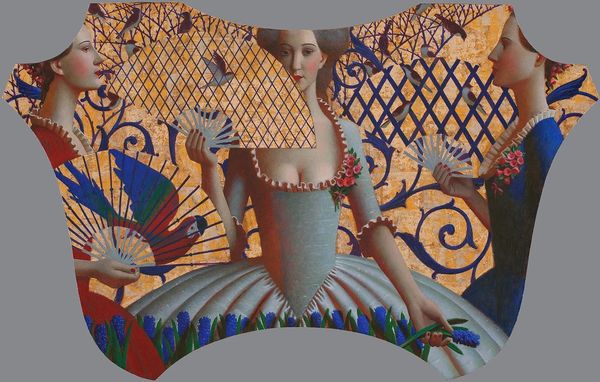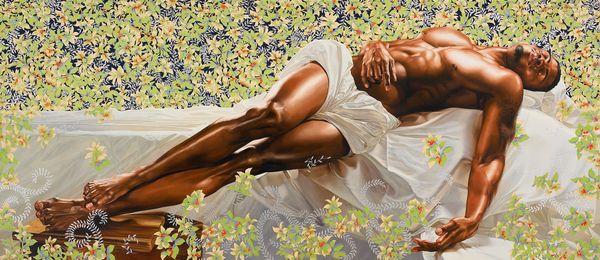
painting, acrylic-paint
#
portrait
#
pattern-and-decoration
#
figurative
#
contemporary
#
painting
#
appropriation
#
acrylic-paint
#
figuration
Copyright: Modern Artists: Artvee
Editor: Kehinde Wiley’s "Juliette Recamier," created in 2012 using acrylic paint, is an interesting take on portraiture. The floral background feels overwhelming, almost suffocating the figure. How do you interpret this work, particularly concerning its historical context? Curator: The original Juliette Récamier, painted by Jacques-Louis David, served as a statement of Neoclassical ideals and feminine virtue in post-Revolutionary France. Wiley's appropriation of that image disrupts those established narratives. Consider the politics of visibility here – who gets to be seen, and how? Wiley inserts a Black female figure into this space traditionally occupied by white European aristocracy, challenging the canon. Editor: So it's about more than just updating a classic? It's a statement about power dynamics? Curator: Absolutely. The decorative floral pattern, while beautiful, also acts as a form of visual "noise." Does it empower the sitter or diminish her presence? We have to examine how contemporary institutions shape the consumption and understanding of art, which are still entrenched with bias and socio-political forces. Editor: It's almost as if she’s both highlighted and concealed at the same time, blending into a very ornate background. I hadn't considered the role museums and art history play in perpetuating certain narratives. Curator: Think about the museum itself as a space of power, dictating what art is deemed valuable. Wiley deliberately plays with those dynamics by re-contextualizing classical imagery. His work is prompting important conversations around race, representation, and who controls the narrative within these institutional walls. Editor: This has really changed how I view appropriation in art. It's not just copying; it’s active commentary. Curator: Exactly! Hopefully, this discussion highlighted the importance of social context and understanding what that means within public spaces such as art.
Comments
No comments
Be the first to comment and join the conversation on the ultimate creative platform.
